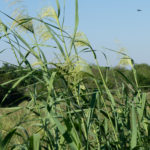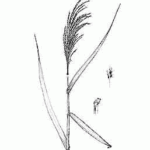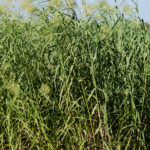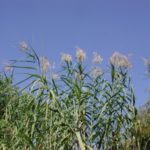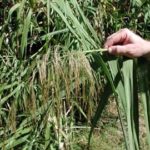Phragmites australis
USDA, NRCS. 2018. The PLANTS Database (http://plants.usda.gov, 28 March 2018). National Plant Data Team, Greensboro, NC 27401-4901 USA.
Illustration courtesy of University of Florida/IFAS Center for Aquatic and Invasive Plants. Used with permission.
What is Common Reed?
Physical Characteristics
Leaves:
- Blades flat
- 0.39-1.5 inches wide
Flowers:
- Loose, branching cluster
- Spikelets few-flowered
Stem:
- Hollow stem
- 3-9 feet tall
- 0.2-0.59 inches thick
Where Does it Grow?
EDDMapS. 2024. Early Detection & Distribution Mapping System. The University of Georgia – Center for Invasive Species and Ecosystem Health. Available online at http://www.eddmaps.org/; last accessed January 17, 2024.
Common reed can be found in marshes, along rivers, at stream sides and canal banks.
Pros and Cons of Common Reed
Many species of birds utilize common reed seeds and use the plant’s thick colonies for shelter. Submerged portions of all aquatic plants provide habitats for many micro and macro invertebrates. These invertebrates in turn are used as food by fish and other wildlife species (e.g. amphibians, reptiles, ducks, etc). After aquatic plants die, their decomposition by bacteria and fungi provides food (called “detritus”) for many aquatic invertebrates.
